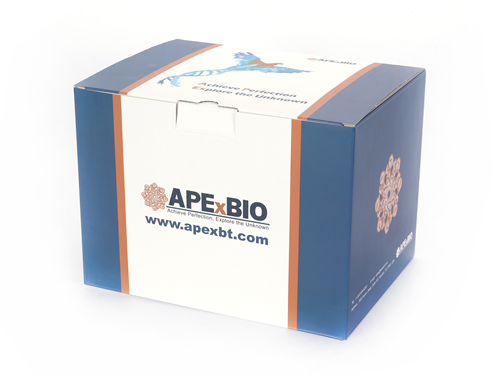Recombinant Human Macrophage Migration Inhibitory Factor
Migration Inhibitory Factor (MIF) is a secreted protein without a cleavable signal sequence and is secreted via a specialized, non-classical pathway. It is secreted by macrophages upon stimulation by bacterial lipopolysaccharide (LPS), or by M.tuberculosis antigens. MIF consists of two α-helices and six β-strands, four of which form a β-sheet. The two remaining β-strands interact with other MIF molecules, creating a trimer. Structure-function studies suggest MIF is bifunctional with segregated topology. The N- and C-termini mediate enzyme activity (in theory). Phenylpyruvate tautomerase activity (enol-to-keto) has been demonstrated and is dependent upon Pro at position 1. Amino acids 50-65(a.a.) have also been suggested to contain thiol-protein oxidoreductase activity. MIF has proinflammatory cytokine activity centered around (a.a.) 49 - 65. On fibroblasts, MIF induces, IL-1, IL-8 and MMP expression; on macrophages, MIF stimulates NO production and TNF-α release folllowing IFN-γ activation. MIF apparently acts through CD74 and CD44, likely in some form of trimeric interaction. Human MIF is active on mouse cells. Human MIF is 90 %, 94 %, 95 %, and 90 % aa identical to mouse, bovine, porcine and rat MIF, respectively.
Reference
1. Edwards KM, Tomfohr LM, Mills PJ, et al. 2011. Sleep, 34: 161-3
2. Delaloye J, De Bruin IJ, Darling KE, et al. 2012. Cytokine
3. Leu RW, Woodson PD, Whitley SB. 1977. J Reticuloendothel Soc, 22: 329-40
4. Landolfo S. 1977. G Batteriol Virol Immunol, 70: 137-43
5. Baugh JA, Chitnis S, Donnelly SC, et al. 2002. Genes Immun, 3: 170-6.
| Alternate Names | GLF, L-dopachrome Isomerase, Phenylpyruvate Tautomerase |
| Source | Escherichia coli. |
| M.Wt | Approximately 12.5 kDa, a single non-glycosylated polypeptide chain containing 115 amino acids. |
| AA Sequence | MPMFIVNTNV PRASVPDGFL SELTQQLAQA TGKPPQYIAV HVVPDQLMAF GGSSEPCALC SLHSIGKIGG AQNRSYSKLL CGLLAERLRI SPDRVYINYY DMNAANVGWN NSTFA |
| Appearance | Sterile Filtered White lyophilized (freeze-dried) powder. |
| Stability & Storage | Use a manual defrost freezer and avoid repeated freeze-thaw cycles. - 12 months from date of receipt, -20 to -70 °C as supplied. - 1 month, 2 to 8 °C under sterile conditions after reconstitution. - 3 months, -20 to -70 °C under sterile conditions after reconstitution. |
| Formulation | Lyophilized from a 0.2 μm filtered concentrated solution in PBS, pH 7.4. with 5% trehalose, 0.02% Tween-80. |
| Reconstitution | We recommend that this vial be briefly centrifuged prior to opening to bring the contents to the bottom. Reconstitute in sterile distilled water or aqueous buffer containing 0.1 % BSA to a concentration of 0.1-1.0 mg/mL. Stock solutions should be apportioned into working aliquots and stored at ≤ -20 °C. Further dilutions should be made in appropriate buffered solutions. |
| Biological Activity | Fully biologically active when compared to standard. The specific activity is determined by binding rhCD74 in a functional ELISA. |
| Shipping Condition | Gel pack. |
| Handling | Centrifuge the vial prior to opening. |
| Usage | For Research Use Only! Not to be used in humans. |
Quality Control & DataSheet
- View current batch:
-
Purity ≥95 by SDS-PAGE.
- Datasheet
Endotoxin: Less than 1 EU/μg of rHuMIF as determined by LAL method.








